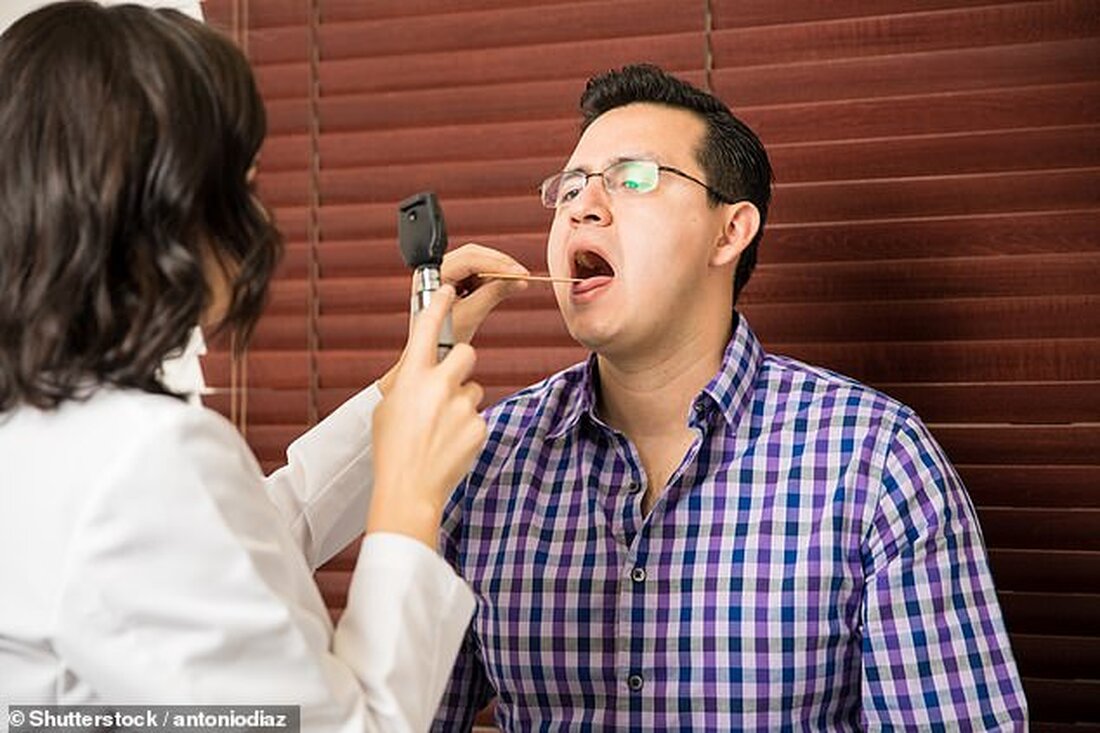Thousands of people living with a nagging throat problem could soon be spared frequent invasive scans - by swallowing a thread.
The new technique, developed by doctors at University Hospital Southampton, will be offered to patients with eosinophilic oesophagitis, a condition that affects around one in 1,000 people and causes severe inflammation of the oesophagus, or oesophagus.
This can make eating uncomfortable, cause nausea, and in severe cases require emergency treatment to clear blockages.
In February, 26-year-old Motherwell footballer Sean Goss revealed he was suffering from the disease.
If sufferers cannot swallow, they may need to rely on shakes as meal replacements for their diet.

The new technique, developed by doctors at University Hospital Southampton, will be offered to patients with eosinophilic oesophagitis, a condition that affects around one in 1,000 people and causes severe inflammation of the oesophagus, or oesophagus

In February, 26-year-old Motherwell footballer Sean Goss revealed he was suffering from the disease
The disease can be treated with medication and by restricting foods that trigger the symptoms, but the only current monitoring method is by inserting a camera into the throat every two months.
This method, called an endoscopy, can be grueling but is essential so doctors can see the inside of the esophagus and take tissue samples. As the condition progresses, scar tissue can build up, permanently narrowing the tube and making symptoms worse.
Now a new test developed by British doctors could replace the inconvenient but vital camera checks.
During a 30-minute procedure, patients swallow a 0.3 mm wide cord rolled into an 8 mm ball. One end is glued to the side of the cheek. You take a sip of water and the thread unravels in your stomach. After half an hour it is pulled out. The cord is made of rayon, a synthetic fiber that is often used in home textiles and is also very absorbent. It absorbs fluid in the esophagus, allowing doctors to look for microscopic inflammatory proteins instead of physical damage.
In eosinophilic esophagitis, infection-fighting cells called eosinophils go haywire and build up in the esophagus. The area becomes inflamed, causing a sensation of the tube tightening.
While many sufferers say that an endoscopy examination is only mildly uncomfortable, a minority find it traumatic and require sedation. It can be particularly difficult for children. Dr. Efrem Eren, a consultant immunologist at University Hospital Southampton, who has used the technique on 1,000 cases, said: "As the string is soft and elastic like food, children as young as five have no problem swallowing it. Additionally, we have these testing devices in all NHS laboratories, so it would be easy to roll it out widely.
The reason why some people develop eosinophilic esophagitis has long puzzled doctors. Many experts believe it is the result of an unusually reactive immune system, as people with immune disorders such as asthma and food allergies are more likely to develop it.
Treatment includes cutting out common trigger foods such as wheat and dairy. Heartburn medications called proton pump inhibitors can be just as effective as steroids. If left untreated, the esophagus can become so narrow that patients require therapeutic dilation – where a balloon is used to expand the tube so they can swallow.
Rarely, patients develop tears in the tissue that require emergency surgery to repair.
Doctors in Southampton are encouraging patients to take the new test at home to avoid hospital stays. Dr. Eren says: "A home test is an easy way to reassure them that their treatment is keeping things under control - this can help encourage them to stick to their treatment plans."
Eli Rana, 13, from Southampton, has been monitored with the thread test since his initial diagnosis of eosinophilic esophagitis in June 2020. His mother, Lisa, an allergy awareness activist, had noticed that he had to cut fruits and vegetables into small pieces and drink several glasses of water with his meals just to get the food down.
To confirm his diagnosis, Eli - who is interested in cars and photography - underwent an endoscopy and biopsy under general anesthesia. The following year, doctors in Southampton monitored his condition using the thread test while he tried to eliminate various foods from his diet. Eventually, it was discovered that soy caused eosinophils to build up in his esophagus.
His mother says: "I can't imagine what it would be like if he couldn't do the string test. It doesn't hurt at all and he can be back at school an hour later - it's amazing. I want Eli to live as normal a life as possible. It would be terrible if he had to take regular days off school for health reasons."

 Suche
Suche
 Mein Konto
Mein Konto

